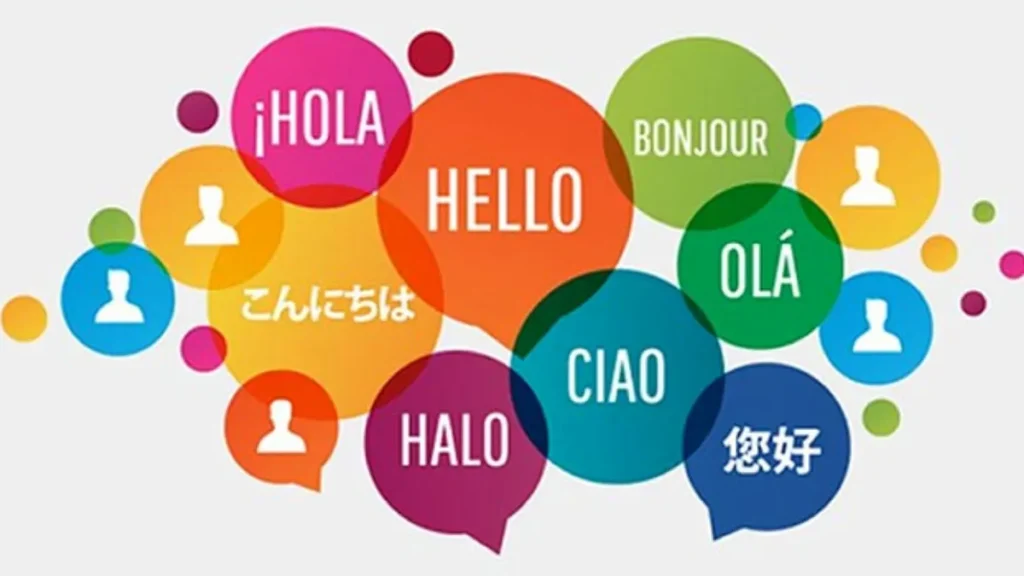Introduction of Languages
Learning a second or even third Language is a challenging but rewarding endeavor that can enrich your life and lead to exciting new career and travel opportunities. We’ve previously looked at some of the easiest languages for English speakers to learn, but what about the hardest ones? Languages vastly different from English are harder for English speakers to learn.

So why would you choose to learn a language that will require more time and effort?
The most widely spoken languages are also some of the most difficult to learn. Mandarin Chinese, spoken by 918 million, is a highly useful language to learn.
Learning a difficult language is good for your brain, as it can improve memory skills and focus.
Looking to reap some of these benefits while also acquiring a valuable new skill? Here are the 19 hardest languages for English speakers to learn, ranked by difficulty (per FSI).
Let’s know about these hardest Languages in the world in detail!
Mandarin
Mandarin Chinese, commonly just referred to as Mandarin, is the first language with the most native speakers globally—a billion and above.
The Mandarin is a tonal language, where the tone changes the word’s meaning. Mandarin has four tones: flat, rising, falling-rising, and falling.
For instance, “ma” can stand for “mother,” “hemp,” “horse,” and “to scold,” depending on the tonal pronunciation.
The tonal aspect of Mandarin poses a significant challenge for learners, especially those from non-tonal language backgrounds.
Arabic
People in many nations in the Middle East and North Africa speak Arabic. It is somewhat difficult to learn because it has a few special features.
- First, Arabic has tons of different ways to form words that could sometimes confuse one.
- Second, it uses a specific form of writing, the Arabic script, that goes from right to left. Furthermore, the letters in Arabic will look different depending on their place in the word.
- Third, there are a lot of dialects – different pronunciations – of Arabic. This means that the Arabic spoken in various areas can be quite different.
Japanese
People in Japan speak Japanese, which is quite different from English.
First of all, Japanese has three kinds of writing: hiragana, katakana, and kanji. Hiragana and katakana are alphabet-like symbols representing sounds, while kanji is a character, usually from Chinese, which stands for entire words or ideas. This means you need to learn hundreds of symbols to read and write in Japanese!
The honorific system uniquely shows respect in Japanese. Depending on whom one speaks to and based upon situations, one uses different words and expressions.
Japanese grammar is very different from that of English. Unlike English, Japanese sentence structure is flexible, often omitting subjects or objects implied by context.
Korean
One more point is that Koreans are very polite, or there exist high-ranking and low-ranking systems of using the language. This pretty much means that the words you use will change according to who you are talking to and how polite you want to be. It’s like Mr. or Mrs. in English, only much more complex!
One of the major reasons that made learning Korean difficult is so simple— for English speakers. But do not worry. With practice and patience, you can become fluent in Korean and explore its rich culture and history!
Russian
People speak the Russian language only in Russia and a few other countries. This makes it different from English in several ways. First, Russia has a special way of organizing its words;We call this cases. It shows how its words relate to each other in a sentence. This might prove a little tricky to learn, first since English can’t relate its words in such a way.
Russian has a very different alphabet as it includes the use of the Cyrillic script. That implies a variation in the external appearance of the alphabet used in English. The study of the Russian alphabet forms an elementary part required during the initial learning of the language.
Finally, Russian pronunciation might also seem challenging for an English learner as there are sounds in Russian that are not found in English. Some Russian sounds might sound strange at first or be hard to produce, but with practice, you’ll get better!
Finnish
People in Finnish speak Finnish, which is quite different from English. One big difference is how words change to show their role in a sentence. We call this grammar, and Finnish has a lot of grammar!
For example, Finnish has many cases whereby words change as per how they are functioning in the sentence. This can be quite elusive to grasp since English doesn’t use cases in the same way.
Another factor that adds complexity to the Finnish language is known as “agglutination.” In Finnish, speakers use word endings instead of separate words to indicate tense, number, and person.
Thus, in Finnish, it is very often possible to put on a lot of different endings that all vary in meaning. In other words, it is like squeezing a lot of meaning into one word!
Hungarian
People speak Hungarian in a country called Hungary and in some other countries nearby. Here are some ways it is very foreign to English. One is that Hungarian has a whole bunch of rules about how words change depending on the job they do in a sentence. We term this grammar, and many people think that Hungarian grammar is complicated. For example, Hungarian has a lot of different word endings for who is doing the action, or when something happens. This can be just a little bit hard for an English speaker to get a handle on.
The Hungarian verb corresponding to “to love” is “szeret”.But the ending of the word “szeret” changes based on who loves. Here are some examples:
- “Szeretek” means “I love.”
- “Szeretsz” means “You love.”
- “Szeret” means “He/she/it loves.”
- “Szeretünk” means “We love.”
- “Szerettek” means “You (plural) love.”
- “Szeretnek” means “They love.”
As you can see, the ending of the word “szeret” changes depending on who is acting lovingly.
Navajo
Navajo,s a language spoken by the Navajo people, Native Americans living mainly in the southwestern United States. Navajo is quite different from English in a few ways. First, the Navajo people organize words using a special method called a verb system. What it means is, verbs are words that do actions. It means they change a lot of different ways to show who does the action when it happened, and how it happened. This can be kind of hard to learn because in English the verbs stay the same.
Second, the grammar in Navajo complicates the formation of words and their fit in sentences. We can examine it from the view of morphology, which includes attaching prefixes or suffixes to words to show a different meaning. Navajo also has a unique way of showing possession, different from English.
Navajo, for example, uses tones to convey meaning, other such languages include Mandarin Chinese, meaning the pitch or tone used for a word might change the meaning of that word.
Example: ‘shí’ may stand for either “father” or “rock,” according to the tone.

Georgian
In Georgia, a country in Eastern Europe, people speak Georgian as their national language. It is different from English in several ways. For a start, the language Georgians use to write is so different from the Latin script; thus, it takes some time to get used to reading and writing in Georgians.
Georgian differs from English in several ways: its writing system, complex verb structure, and extensive use of word endings.
Rich Inflectional System: The Georgian language has an extensive system of inflection, in which words change infinitely in many different ways to show their role in a sentence—for example, a noun indication of whether the sentence’s subject or object will change the ending. This can be very difficult for a native English speaker who does not usually deal with such a system.
Icelandic
Icelandic is a language of the North Atlantic Country. It differs from English in several ways, including complex grammar with four cases.
For one thing, Icelandic uses a lot of different declensions, which is when words can change the ending to denote a few things like gender, number, and case. Now, this is a little more difficult for the English speaker simply because we don’t use nearly so many declensions.
Lastly, there are some old-fashioned words or pronunciations in Icelandic that are hard to learn. Some Icelandic words come from Old Norse, the language of the Vikings, and they sound very different compared to most other words in English.
Bulgarian
Approximately eight million native speakers mainly in Bulgaria speak Bulgarian, a Slavic language. This can make the study of Bulgarian an interesting undertaking, as the country has such a rich history, culture, and literature.
Like Russian, it uses the Cyrillic alphabet, which can be intimidating for those unfamiliar with it. Bulgarian can be a little tough for English speakers in terms of vocabulary and grammar because it doesn’t have many English words as loans, and the conjugations for verbs are a little tricky.
On the downside, however, many online platforms offer an overabundance of fine tools and Bulgarian courses that practically guarantee a good grasp of the language. If you first spend some time getting the sounds of the consonants and vowels firmly in your mind and building your vocabulary, you are already on the path to success.
Serbian
Serbian is a Slavic language that around 12 million people speak. While most people use it in Serbia, authorities also recognize it as one of the official languages in Bosnia and Herzegovina, Montenegro, and Kosovo. Furthermore, Serbian is a recognized minority language in several other countries, including Croatia, Romania, and Hungary — something that makes learning it a rather useful endeavor for those who are going to visit, work, or study in Eastern Europe.
It is notoriously hard for native English speakers to learn Serbian because it has two scripts (Cyrillic and Latin), seven tenses, and a vowel (R), which sometimes acts as a consonant and the letter or word “učenik” as a high-gendered language. Unlike Hungarian, this belongs to the family of high-gendered languages. Another nice feature is that Serbian is a phonetic language, so words are pronounced about as they are written.
Albanian
This is the official language in Albania and Kosovo. Roughly six million people in the Balkans speak this language. It is technically an Indo-European language; though, in functioning it is not comparable to any other language. This language borrows most of its grammar rules from greek and Latin, besides some vocabulary, and from some extinct languages like Thracian, Illyrian, and Dacian.
The complexity of the grammar of Albanian sets rather high walls against English speakers who are learning it. For instance, in Albanian, each separate noun features a case and gender, which can only be remembered along with the vocabulary.
Despite being hard, Albanian is a cool language that is going to connect you with a culture that will be very different. You are probably much closer to picking it up than you would suppose by just finding opportunities to practice with native Albanian speakers.
Turkish
Turkish is one of the more widely known languages in the Turkic language family. With over 75 million native speakers in Turkey as well as Iraq, Syria, and many parts of Europe, it’s a valuable language to know. It’s also one of the more complicated languages for English speakers to learn.
Turkish uses a Latin-script alphabet (with a few modifications) and includes many loan words from Persian and Arabic, which makes for an intriguing mix.
One aspect of the Turkish language that can be challenging is the need to memorize the many grammar rules and learn how to apply them, as the rules for the use of suffixes and word order are significantly more complicated than in English. Fortunately, it’s a phonetic language, so pronunciation is one aspect that shouldn’t be too challenging.
Farsi
Farsi or Persian Farsi is an Indo-European language spoken as a native language by around 70 million people, primarily in Iran and Afghanistan, but also in Uzbekistan and Tajikistan.
Although it’s a complex language for English speakers to learn, several English words originate from Farsi, including “soup,” “pyjama,” and “checkmate.” One of the more challenging aspects of the Farsi language is that it uses an Arabic script, which not only looks completely different from the Latin Alphabet but is also read from right to left.
Although it can take time to master, Farsi is a very poetic language in which many of the words have deep meanings as well as dual meanings, and learning it will connect you to a rich and diverse culture.
Greek
Greek is the oldest living Indo-European language, and although modern It does differ from Greek ancient, it’s not as far removed from its roots as Spanish or French are from Latin. The Greek is spoken as a native language by around 13 million people, primarily in Greece and Cyprus.
Many aspects of Greek will be challenging for English speakers to learn, including a lot of new vocabulary, three different genders for nouns, and complex grammar rules. To read and write Greek, you will also need to spend some time memorizing the Greek alphabet.
Even so, as an ancient language that is at the root of many European languages, Greek is very much worth the effort to learn.
Hindi official Languages
Hindi is one of the official languages of India and the native language of 341 million people. It’s also spoken in several other countries including Nepal and Pakistan, and has 274 million non-native speakers. Hindi descends from Sanskrit, an ancient South Asian language that can be traced back thousands of years and has similarities to ancient Greek and Latin.
Hindi is written in Devanagari script, which can take a considerable time for English speakers to master. When it comes to pronunciation, Hindi is a phonetic language, but there are many sounds that English speakers will not be familiar with. Many of the differences between words are also so subtle that it can be difficult for new learners to pick up on them.
Despite the obstacles to learning it, however, Hindi is a beautiful language with a rich history, and learning it will open up countless new travel, work, and study opportunities.
Vietnamese Languages
Vietnamese is part of the Austroasiatic language family. It’s the national language of Vietnam and the native language of around 76 million people. Vietnamese can be useful to learn if you will be traveling through or staying in Vietnam for a longer period. This is particularly true if you plan to venture beyond the main cities and popular tourist areas where English is more likely to be understood.
Vietnamese can be tricky for English speakers due to its difficult pronunciation. It has six tonal variations, which are determined by diacritics. Since the intonation of the speech changes the meaning of the context, and some vowels can be paired up to form new sounds, you’ll need to spend a considerable amount of time listening to and practicing Vietnamese before you can make yourself understood.
Fortunately, practice makes perfect, and once you get used to the different tones, Vietnamese grammar is quite straightforward.
Thai Languages
Thai is the national language of Thailand and is spoken by approximately 60 million people, primarily in Thailand. It’s a good language to learn if you are planning to work, study, or travel in Thailand for longer periods, as English is not widely spoken or understood.
With that said, Thai is a difficult language for English speakers to learn, because, like Vietnamese and Chinese, it is a tonal language. This means learners must be able to recognize the pitch of a tone to understand the context of what is being said. The Thai language has five tones, and some of them are not found in the English language. Thai also uses its script, which consists of 44 consonants, 18 vowels, and six diphthongs that must be memorized.
On the bright side, once you’ve mastered these aspects, Thai grammar isn’t overly complex, and the vocabulary has some loan words from English, French, and Portuguese, although the majority are from Chinese, Sanskrit, Khmer, and Pali.

What are the Foreign Service Institute’s Hardest Languages?
The Foreign Service Institute has created guidelines for ranking the difficulty of learning a foreign language. The rankings are based on the estimated time for an English speaker to learn to speak and read the language.
The rankings also guide the foreign language training programs for diplomats and other government personnel required to acquire foreign languages for work.
The Foreign Service Institute has created guidelines for ranking the difficulty of learning a foreign language. The rankings are based on the estimated time for an English speaker to learn to speak and read the language.
Languages categories include:
Category I Languages
Languages most closely related to English, like the Romance languages—which include Spanish, French, Italian, and Portuguese. These languages generally require about 24-30 weeks of full-time study (600-750 class hours) to achieve proficiency.
Category II Languages
: Languages with some linguistic and/or cultural differences from English, including German, Indonesian, Swahili, and Malaysian. These languages generally require about 36 weeks of full-time study (900 class hours) to gain proficiency.
Category III Languages
Languages with significant linguistic and/or cultural differences from English, more complex grammatical structures, and/or different writing systems. Examples include Russian, Hindi, Greek, and Thai. These languages require about 44 weeks of full-time study (or 1,100 class hours).
Category IV Languages
For instance, this will include languages such as Arabic, Mandarin Chinese, Japanese, and Korean, which for English speakers are exceptionally tough due to massive linguistic and cultural differences, complex grammatical difficulty, and/or a non-Roman writing system. An individual might take about 88 weeks of full-time study, which is equivalent to 2,200 class hours to gain proficiency.
Why Languages Matter
Language is what connects humans. Whether it be words, symbols, or even gestures, the bottom line is how one expresses and shares thoughts and feelings. Think about it like this: when you talk to somebody, you are using language to tell that person what’s running in your mind, right?
With our world getting smaller and more connected, now there is a much greater need to understand each other’s languages. That’s where international languages play a role—those tricky ones that people around the world use to communicate.
International languages are useful for learning the hardest languages in the world, even the tough ones—the advantage is that learning such helps one connect to people in a different culture for trade in goods, studying abroad, or even making new friends.


1 thought on “Top 19 Most Difficult & Hardest Languages in the World”